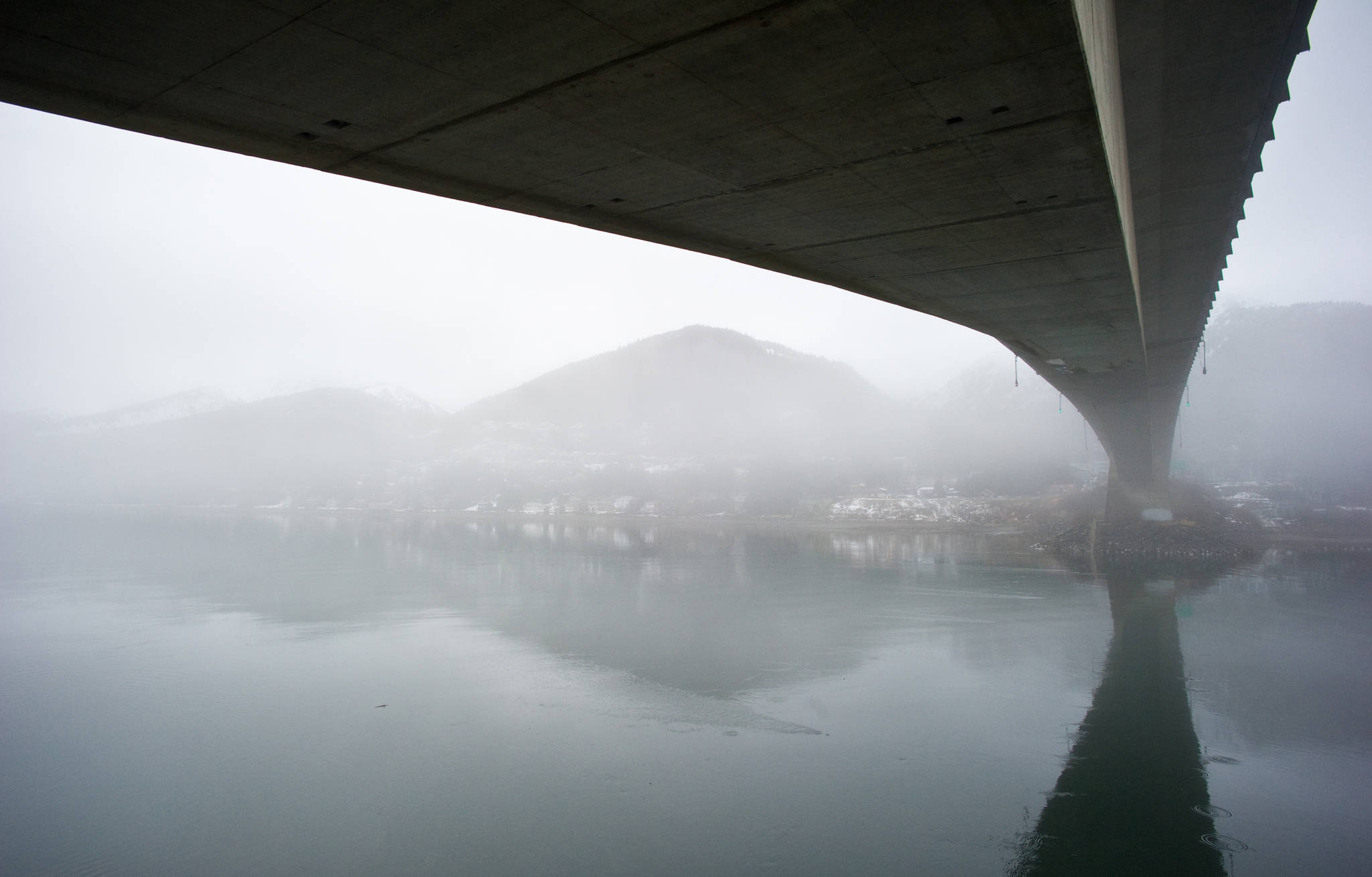A divisive issue dating back at least to 1984 on whether Juneau should have a second connection between Juneau and Douglas Island has come back into city plans.
The North Douglas Crossing is once again a topic of conversation for the city after $250,000 of capital improvement project funding will go toward analyzing the impact of what a second crossing could mean to the City and Borough of Juneau.
Mayor Ken Koelsch proposed the CIP funding as part of the Fiscal Year 2019 CBJ budget. It was approved at the CBJ Assembly meeting June 4. While no exact details are set, Koelsch said the funding toward the bridge will go toward making a “plan of action.” Koelsh said that involves taking the series of studies done over the years, modernizing them and letting the public know where the city stands on the plan.
Koelsch said one of the biggest reasons he would like to see the North Douglas Crossing come to fruition is providing easier access to West Douglas, untouched wilderness on the backside of Douglas which CBJ and others have tried to develop for decades.
“If we are going to have growth in Juneau, one of the areas in West Douglas,” Koelsch said. “West Douglas has some great potential and even the weather is a little bit better.”
Douglas Bridge at the crossing of Egan Drive and 10th Street is the only connection between the mainland and Douglas. The Department of Transportation and Public Facilities did traffic analyses in 2002 but DOT spokeswoman Aurah Landau said in an email to the Empire that those studies are outdated and do not reflect the current traffic patterns in Juneau.
“Not only are previous analyses based on outdated traffic growth projections but the placement of the roundabout at the bridge has changed traffic flow,” Landau said.
In the 2007 CBJ overview plan for the second crossing, the goals were to improve traffic access and efficiency between North Douglas and Juneau, improve emergency response and transportation safety and provide more direct access to West Douglas for planned residential, industrial, port commercial and recreation uses. The plan also included a CBJ study that projected the crossing would reduce traffic on the current Douglas Bridge and traffic between the crossings on North Douglas Highway by 40 percent.
In 2010, voters rejected the building of the North Douglas Crossing. Koelsch said part of the problem then was the public issues of location along wetlands and that there was not a clear funding source. However, a recent study by the McDowell Group gave indications that Juneau residents may have changed their minds. Of the 402 Juneau residents surveyed, nearly 80 percent supported the idea of the North Douglas Crossing. Koelsch cautioned, though, that while those numbers look supportive of the project at first, he said he believes that when people know more people know about location and cost, chances are the number of people supporting the plan will decrease.
“As soon as you come up with a place to put (the crossing), you are going to lose some of that 80 percent (of those supporting the project),” Koelsch said. “As soon as you come up with the cost, you are going to lose some more of that 80 percent.”
First Things First Alaska Foundation, a pro-development group in Juneau, and the CBJ co-funded the McDowell Group study. FTFAF Executive Director Denny DeWitt said he views the funding as a starting point to broaching the issue once again.
“You have to stop and take a breath and realize that we won’t have the North Douglas Crossing tomorrow afternoon,” DeWitt said in a phone interview with the Empire Wednesday. “There is a whole process. I think the important part is that the mayor and the Assembly recognize that this is important to the citizens. It is a great first step. Obviously, the more resources committed to it the better, but this is an important start.”
Koelsch said he hopes to get public support and he hopes the CIP funding will eventually provide some locations and costs favorable to the public.
“If you are going to get the community behind you, it really comes down to rational thinking and making sure people can see your vision,” Koelsch said.
• Contact reporter Gregory Philson at gphilson@juneauempire.com or call at 523-2265. Follow him on Twitter at @GTPhilson.

